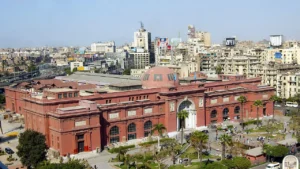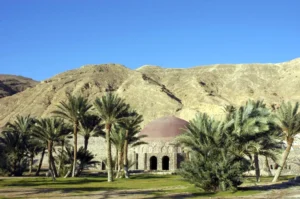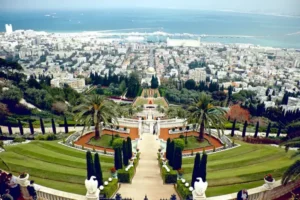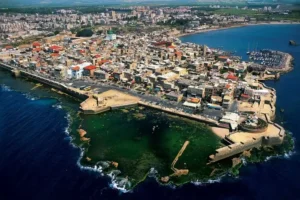
We are here for you
Cairo Branch
15 Ahmed Fouad Street, in front of the Aviation Club gate, (St. Fatima)
- +201096877965
- +201501307727
- +201210950597
Sohag Branch
88 El-mahata St, Arab Bakhwag, Tahta, Sohag Governorate 1742552
- +201285100263
- +201285100264
- +201287069042
Asyut Branch
El Guish St. – Hasouba Tower before the University Tunnel – First Floor Asyut, Egypt, 71111
- +201001940359
- +201201638938
- +201285100263
Join our Newsletter
Register your email to receive the latest news and special offers.
The Egyptian Museum in Cairo, commonly known as simply the Egyptian Museum , romanized: al-Matḥaf al-Miṣrī, located in Cairo, Egypt, houses the largest collection of Egyptian antiquities in the world. It houses over 120,000 items, with a representative amount on display. Located in a building built in 1901, it is the largest museum in Africa. Among its masterpieces are Pharaoh Tutankhamun's treasure, including its iconic gold burial mask, widely considered one of the best-known works of art in the world and a prominent symbol of ancient Egypt.
History
Aerial view 1904 from a balloon where the Egyptian Museum appears to the right side.
The Egyptian Museum in the 1950s.
The Egyptian Museum of Antiquities contains many important pieces of ancient Egyptian history. It houses the world's largest collection of Pharaonic antiquities. The Egyptian government established the museum built in 1835 near the Ezbekieh Garden and later moved to the Cairo Citadel. In 1855, Archduke Maximilian of Austria was given all of the artifacts by the Egyptian government; these are now in the Kunsthistorisches Museum, Vienna.
A new museum was established at Boulaq in 1858 in a former warehouse, following the foundation of the new Antiquities Department under the direction of Auguste Mariette. The building lay on the bank of the Nile River, and in 1878 it suffered significant damage owing to the flooding of the Nile River. In 1891, the collections were moved to a former royal palace, in the Giza district of Cairo.They remained there until 1902 when they were moved again to the current museum in Tahrir Square, built by the Italian company of Giuseppe Garozzo and Francesco Zaffrani to a design by the French architect Marcel Dourgnon.
During the Egyptian Revolution of 2011, the museum was broken into, and two mummies were destroyed. Several artifacts were also shown to have been damaged and around 50 objects were stolen.[8][9] Since then, 25 objects have been found. Those that were restored were put on display in September 2013 in an exhibition entitled "Damaged and Restored". Among the displayed artifacts were two statues of King Tutankhamun made of cedar wood and covered with gold, a statue of King Akhenaten, ushabti statues that belonged to the Nubian kings, a mummy of a child, and a small polychrome glass vase.
The museum was reportedly used as a torture site during the 2011 Revolution, with protestors forcibly and unlawfully detained and allegedly abused, according to reports, videos and eyewitness accounts. Activists state that "men were being tortured with electric shocks, whips and wires," and "women were tied to fences and trees." Prominent singer and activist Ramy Essam was among those detained and tortured at the museum.





